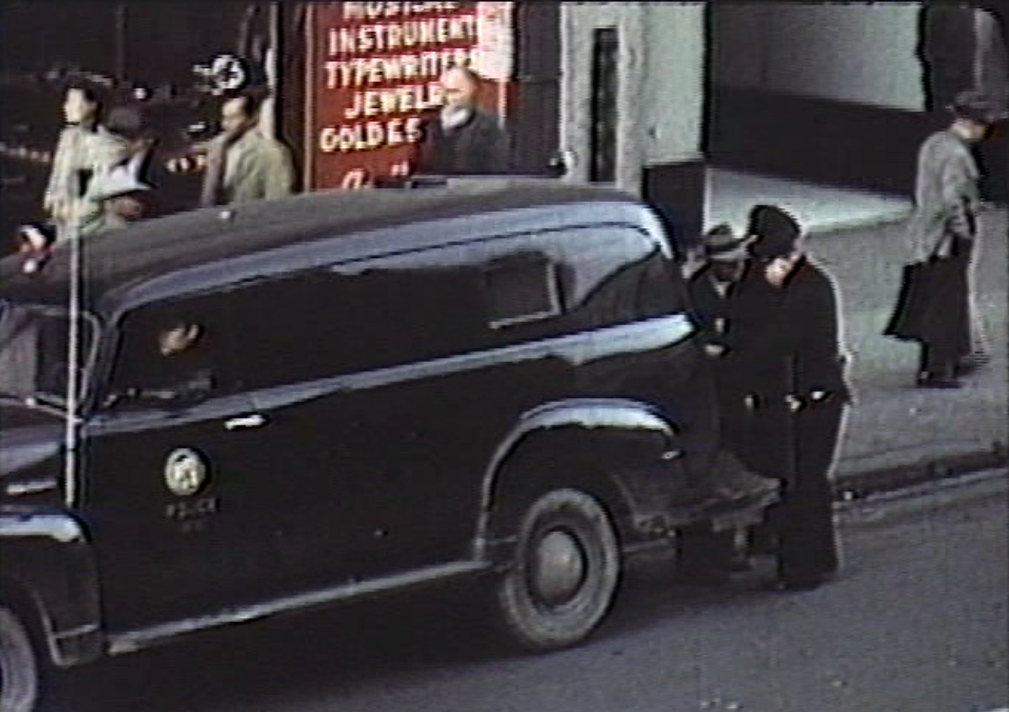In anticipation of the October 20 rooftop screening of the Union Rescue Mission’s 1949 film Of Scrap & Steel, in this post we’ll examine two stills from the film as a window to understanding how two mid-century Los Angeles County law enforcement agencies dealt with the task of enforcing statutes concerning transients.
The first of the two film stills on the left was shot on Main Street in front of the Fun Palace at 243 South Main. The second still was shot on 2nd Street, just east of Main.
The first, Fun Palace still shows one of the notorious LAPD “Black Maria” vans, with an officer shuffling an old “rummy” into the back. This scenario was common at the time. Arrest was the primary tool used by the LAPD for dealing with transients within the borders of Skid Row. In future blog posts we will delve further into the history of vagrancy statutes in Los Angeles, the evolution of the City’s Public Policy on the topic, and the role of the LAPD as an enforcing agency.
It is the second still showing an officer in what appears to be a dark brown uniform which is of particular interest. The nitrate print of the film was so badly damaged that when it was digitized, the Los Angeles County Sheriff’s Department’s traditional green uniform appears as dark brown, so it is unclear what type of officer is patrolling Skid Row in search of drunks to roust. Closer observation reveals the familiar LASD deputy’s badge on the left breast. But what are LASD deputies doing on East 6th Street, in an area clearly within the jurisdiction of the LAPD?
What the film does not show is that just moments before the deputies pulled up to the curb and hustled the transient into their car, an LA County Health Department official issued this man with a vagrancy citation. Working in tandem with the Health Department, LASD deputies would sweep through Skid Row, arresting anyone who had received such a citation and lacked the capacity to immediately flee the scene. Interestingly, this is the same method which would be used on larger scale social control operations like the clearing of the residential community Chavez Ravine in the early 1960s.
While we now understand how it is that LASD deputies might make arrests along Skid Row, within the boundaries of the LAPD, the motivation for such arrests still needs clarification.
When the Hall of Justice was opened in 1925, the LASD was put in charge of running the Hall’s jail. Because prisoners in the Hall of Justice were put to work on road crews and doing other County work, it was in the interest of the powers that be to maintain at all times a capacity population. The routine arrest captured in the second still was one of the ways in which that population was maintained. When this man sobered up, he would be put to work.


